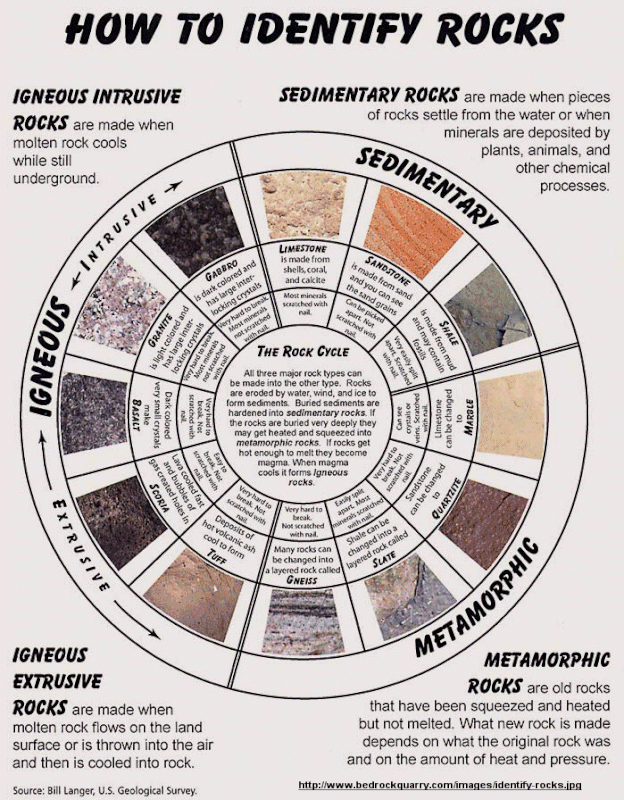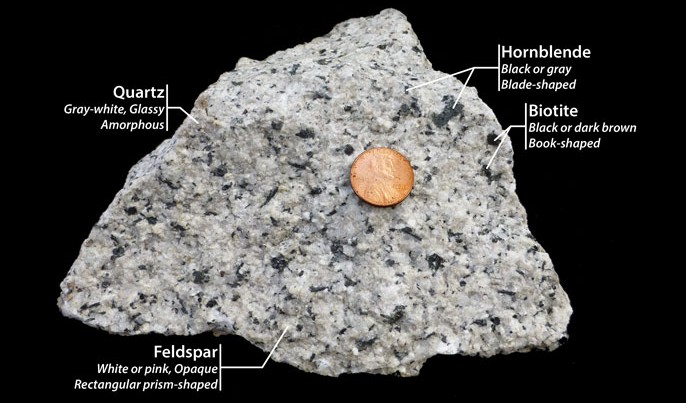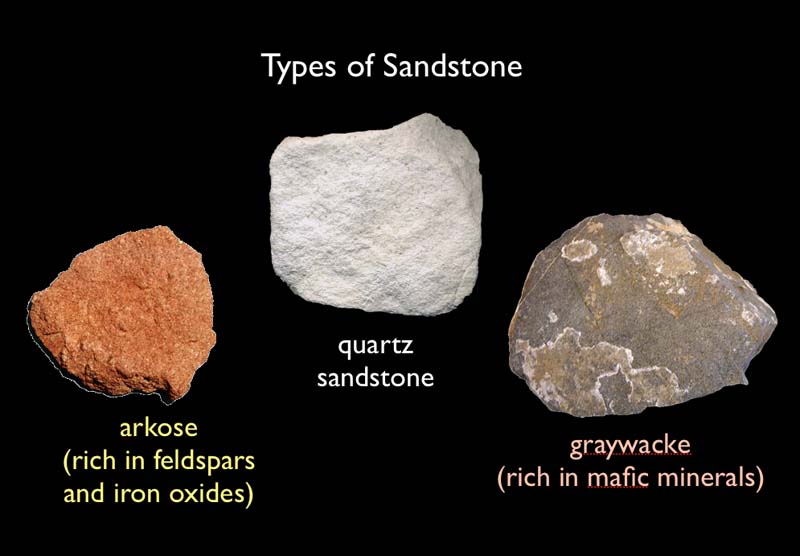The rocks you will see at this location are sandstone, which is a sedimentary rock, and granite, an igneous rock. Let's first discuss how granite is formed.
Granite
Granite comes from the melting of continental crust. Usually it's oceanic crust that contains many fossils. Continental crust can only be melted at subduction zones along transverse fault lines. The closest active subduction zone to ground zero is just west of Northern California and it goes al the way up to Canada. Millions of years ago, California had a subduction zone too and the end result was the San Andreas Fault and the Juan de Fuca Plate which is being carried under the continental crust. This happens for two reasons. One, the oceanic crust of the Juan de Fuca is more dense as it has carried more weight due to water. And two, convection currents drive the process. See the diagram below for a more detailed explanation.
 Granite, as you already know, can only be found in areas near active fault zone of large tectonic movements, such as the San Andreas Fault. Depending on how active the fault it, the granite can be jagged or smooth in some areas when unearthed. Granite not only looks nice and shiny when polished, but it also is extremely strong. This is because granite forms when melting continental crust, likely from the subduction of the Juan de Fuca plate under the Pacific Plate in Northern California to Washington State. This type of rock is called metamorphic because it is made by the melting of other rocks. Granite can reach the surface of the earth through large tectonic activities. The San Andreas Fault has then uplifted deposits of melted ocean crust to the surface. Granite is found quite frequently in the north west of the North American Continent. Because granite is made from lava or melting of continental crust, it is classified as igneous rock.
Granite, as you already know, can only be found in areas near active fault zone of large tectonic movements, such as the San Andreas Fault. Depending on how active the fault it, the granite can be jagged or smooth in some areas when unearthed. Granite not only looks nice and shiny when polished, but it also is extremely strong. This is because granite forms when melting continental crust, likely from the subduction of the Juan de Fuca plate under the Pacific Plate in Northern California to Washington State. This type of rock is called metamorphic because it is made by the melting of other rocks. Granite can reach the surface of the earth through large tectonic activities. The San Andreas Fault has then uplifted deposits of melted ocean crust to the surface. Granite is found quite frequently in the north west of the North American Continent. Because granite is made from lava or melting of continental crust, it is classified as igneous rock.
 Sandstone
Sandstone
Sandstone is a little more easier to understand. It's exactly what it sounds like. It's a stone, made of compacted sand. If you rub at it long enough, small pieces of sand will fall off. But please, do not try that here and tamper with the rocks at this location. Sandstone is formed during a processes called lithification. The first step in lithification is to have bare rock exposed to the elements where it can be eroded. When wind or water erodes the rock away, small fragments of the original rock are carried to a different location. Overtime, these small pieces of rock are carried to the ocean, where they sink to the bottom of the sea floor and accumulate. After a few million years, and with added heat and pressure, the sand compacts and creates sandstone.

There are four types of sandstone, based on it's mineral content. Like granite, sandstone also has different types of micro crystals, most are too small to see with the naked eye. Granite's crystals are usually much larger to see. Below is a chart of the four types of sandstone, and what they look like under a microscope. Note the difference in visible percentages of mineral content.

image sharing
Works cited
https://en.wikipedia.org/wiki/San_Luis_Obispo_Carnegie_Library
http://graniteobjectspta.co.za/granite-formed/
https://legacy.etap.org/demo/grade4_science/lesson5/instruction2tutor.html
http://www.geography.hunter.cuny.edu/~tbw/soils.veg/lecture.outlines/soils.chap.1.2/soils.chap.1.2.htm
http://www.indiana.edu/~g103/theinteractiveearth/5-Sedimentary%20Rocks/module5.html
http://onlinelibrary.wiley.com/higheredbcs/legacy/college/levin/0471697435/chap_tut/chaps/chapter05-08.html
TO LOG A FIND ON THIS CACHE YOU MUST E-MAIL (NOT THE GEOCACHING.COM MESSAGE CENTER) ME THE CORECT ANSWERS BEFORE YOU LOG A FIND. ANY INCORRECT ANSWERS WILL RESULT IN A DELETED LOG
**No group emails will be accepted as for me, this is a form of cheating. If this happens, all your logs will be deleted. Any incorrect or inaccurate answer will result in a deleted log, so don't let this happen to you!**
1. Reading Rocks! on the first line of your email AND list all geocaching names of your party so I can match your answers to them
2. Describe the texture AND color of the BOTH the granite and sandstone at this location.
3. Describe the weathering process of these rocks. Is there any rusting or corrosion? If so, where do you see it and why is this occurring?
4. Which rock, granite or sandstone, is eroding the most AND why?
5. Because granite is an igneous rock, it has many different types of minerals inside of it. Using the diagram above (in the granite section), what is the most abundant mineral you see in this piece of granite?
6. Because sandstone is a sedimentary rock, it has many different types of sediment inside of it. Using the diagram above, state which one of the four listed types is sandstone here AND why.